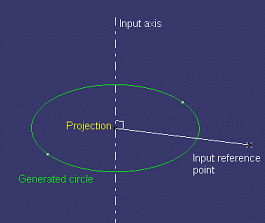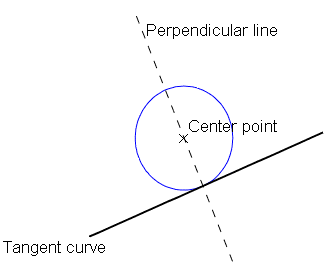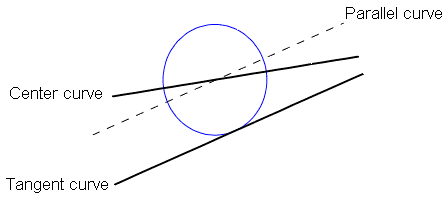Creates a circular arc from its center and radius. If the argument 4 is 0, arguments 5 and 6 are taken into account. Otherwise, a circle is created. |
|
Creates a circular arc from its center and another point located on
the circle. If the argument 4 is 0, |
|
Creates a circular arc. The points specified in arguments 1 and 2 are located on the arc to be created and define the arc limits when the integer specified in the argument 6 is 0. When 0 is specified in the argument 6, modifying the argument 5 boolean value allows you to display the alternative arc. |
|
Creates one or more circular arcs passing through three points. When 0 is specified in the argument 4, the first and third points define the arc limits. When 1 is specified in the argument 4 the whole circle is defined. When 2 is specifies in the argument 4 the direct circle is defined. When 3 is specified in the argument 4, the complementary circle is defined. |
|
Creates one or more circular arcs tangent to two curves. When 0 is specified in the argument 7, the tangency points define the arc limits. Modifying orientation1 argument value allows you to reverse the arc orientation with respect to the curve1 curve (there may be no solution). Modifying orientation2 argument value allows you to reverse the arc orientation with respect to the curve2 curve. |
|
Creates one or more circular arcs tangent to two curves. |
|
Creates one or more circular arcs tangent to two curves and passing
through a point on the second curve. When 0 is specified in the argument
7, the tangency points define the arc limits. Modifying the
orientation1 argument value allows you to reverse the arc orientation
with respect to the crv1 curve |
|
Creates one or more circular arcs tangent to three curves. When 0 is specified in the argument 8, the tangency points define the arc limits. Modifying the value of an orientation argument allows you to reverse the arc orientation with respect to the curve which has the same order in the argument specification (orientation1 to be associated with curve1). |
|
Creates a circle using a point and axis/line as input elements and corresponds to `Center and axis` type of circle in the user interface.
|
|
|
|
 |
|
"Point and axis" with projection |
|
Creates a circle using center, curve and support and corresponds to `Center and tangent` type of circle in the user interface. Orientations are needed to select the proper circle in case of multiple solutions.
|
|
|
|
|
This is used to create a circle using center, curve and support and corresponds to `Center and tangent` type of circle in the user interface. Orientations are needed to select the proper circle in case of multiple solutions.
|
|
|
|
|


